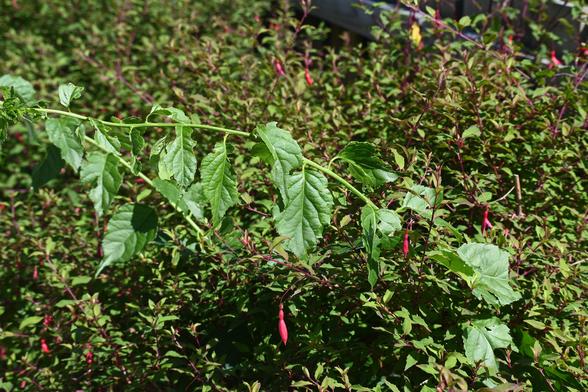Monster catfish and its creepy smile invade PA rivers
Flathead catfish (Pylodictis olivaris) may look like they are perpetually smiling, but these five foot-long fish are no laughing matter in regions where they do not belong. The opportunistic predators are now one of the top predators in Pennsylvania’s Susquehanna River, creating a major threat to the local food web. Without any natural predators to keep them in check, these enormous fish can alter a river system in only a matter of years.
For this study, the researchers collected a total of 279 fish and 64 crayfish for stable isotope analysis, including 79 flathead catfish like this one, 45 smallmouth bass, 113 channel catfish and 42 minnows comprising nine species. CREDIT: Penn State. Meet the flathead catfish Flathead catfish are native to several parts of the United States, including the Missouri, Mississippi, Ohio, and Rio Grande river basins. They are most recognizable by their broad flat head (as the name suggests) and lower jaw. It also sports a distinctive tail fin outline that is square or slightly notched. They are also really big. They can grow up to 60 inches long and weigh roughly 30 pounds on average. Some have even been known to tip the scales at over 100 pounds. According to Pennsylvania Sea Grant, their coloration can vary, but most adults have an olive-colored back and sides with dark brown to yellow-brown mottling. One thing that separates them from other catfish species is their diet. They are considered obligate carnivores and primarily prey on live fish. When the flathead catfish was introduced in Georgia’s Altamaha River it eliminated the bullhead catfish and caused an 80 percent reduction in redbreast sunfish numbers. Flathead Catfish have also eliminated native catfish populations in several North Carolina rivers.
Study coauthor Sydney Stark, who recently graduated from Penn State with a master’s degree in wildlife and fisheries science, lifts a 40-pound flathead catfish. CREDIT: Penn State. Giants in the Keystone State While flathead catfish are native to western Pennsylvania, the first report of the species in the Delaware River basin further east was from Blue Marsh Reservoir and in the Susquehanna during the 1990s. Since then, they have continued to spread throughout regions of the Delaware, Schuylkill, and Susquehanna rivers. “Flatheads grow fast in this river system, attain large body sizes and can eat a variety of prey,” Olivia Hodgson, a master’s student at Penn State University, said in a statement. “Because adult flatheads have few natural predators, flathead catfish can exert strong control over the ecosystem.” Hodgson is the co-author of a study recently published in the journal Ecology, which found that the flathead catfish are now considered apex predators. They are higher on the food web than resident top predators like the channel catfish and smallmouth bass. Since the channel catfish now have a lower position in areas where the flathead catfish are present, they have to eat lower on the food web. In areas with flathead catfish all species showed broader and overlapping diets, according to the study. “This suggests that resident species are changing what they eat to avoid competing with or being eaten by the invader,” Hodgson said. These findings support the tropic disruption hypothesis. When a new predator enters an ecosystem, the existing species must alter their behavior, diets, and roles within the already established food web. “This can destabilize ecosystems over time. Our study highlights how an invasive species can do more than just reduce native populations — it can reshape entire food webs and change how energy moves through ecosystems,” explained Hodgson. [ Related: Please stop releasing pet goldfish into the wild. ] Big fish, small particles The team also took a closer look at the ecological role played by various species within the Susquehanna River by looking at their isotopic niche. An isotopic niche is the range of carbon and nitrogen markers that are found within the tissues of an organism. When fish eat, their bodies take in the isotopic signature of their food. When sampling their tissues, scientists can measure nitrogen isotopes to determine what they are eating. Carbon isotopes indicate how they are using the habitat. Comparing isotopic signatures across regions can indicate both habitat shifts and how fish are migrating. They collected a total of 279 fish (79 flathead catfish, 45 smallmouth bass, 113 channel catfish and 42 minnows comprising nine species) and 64 crayfish for stable isotope analysis. All of the samples were oven dried and ground to a fine powder using a mortar and pestle for a process called stable isotope analysis. This widely used scientific tool can help explain patterns in a food web, highlighting links between where animals are positioned in the food web. The stable isotope analysis explained the patterns within the Susquehanna food web in habitats that are already invaded by flathead catfish and those that are not. “It allowed us to understand links between different species in the river food web and how invasive species might lead to changes in how native species interact and compete, what they eat and how their diets overlap, and if they might be displaced from preferred habitats by the invader,” Hodgson said. By understanding how these resources are being used by the fish, the team can better understand the potential competition for resources and how flathead catfish affect the habitats they take over. According to Pennsylvania Sea Grant, preventing the introduction and spread of the flathead catfish is currently the best way to protect natural habitats from harm. The agency recommends several prevention and control tips including knowing how to identify and report flathead catfish, not releasing any that are caught, and properly disposing of unused live bait. The post Monster catfish and its creepy smile invade PA rivers appeared first on Popular Science.









